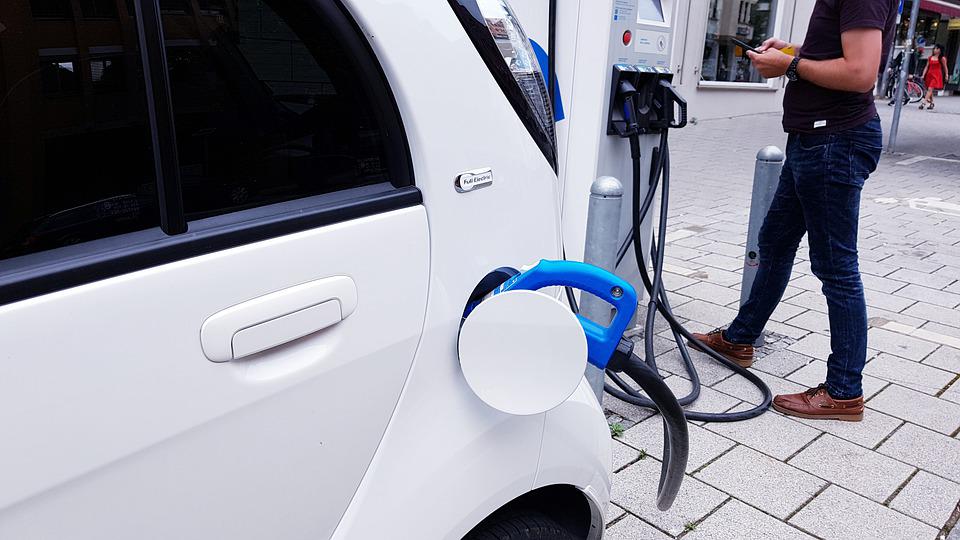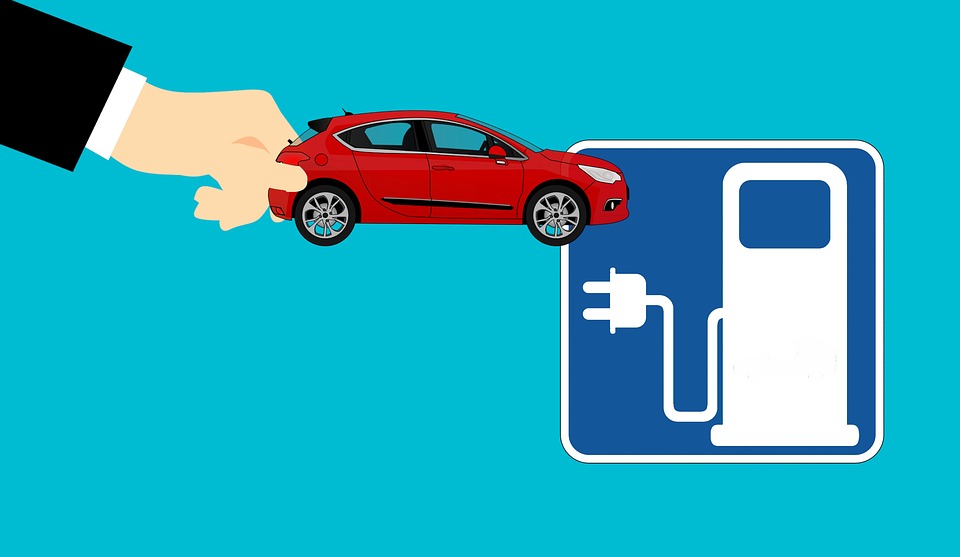Want to keep your electric car running for as long as possible? Here’s what you need to do
If you bought one of the best electric cars, you know that keeping its battery healthy is an important part of ownership. Keeping a battery healthy means it can store more power, which directly translates to driving range. A battery in top condition will have a longer lifespan, is worth more if you decide to sell, and won’t need to be recharged as often. In other words, it’s in the best interest of all EV owners to know how their batteries work what needs to be done to keep their electric car battery healthy.
How does an electric car battery work?
The lithium-ion battery in your car is functionally no different from the battery in any number of devices you currently own — be it a laptop, smartphone or simple pair of rechargeable AA batteries. Though they are a lot bigger, and come with advancements that are too big or too expensive for smaller everyday gadgets.
Each lithium-ion battery cell is built the same way, with two separate sections that lithium ions are able to travel between. The battery’s anode is in one section, while the cathode is in the other. The actual power is collected by lithium ions, which move across the separator depending on what the battery’s status is.
When discharging, those ions move from the anode to the cathode, and vice versa when the battery is recharging. The distribution of the ions is directly linked to the charge level. A fully-charged battery will have all the ions on one side of the cell, while a depleted battery will have them on the other. A 50% charge means they’re evenly split between the two, and so on. It is worth noting that the movement of lithium ions inside the battery does cause tiny amounts of stress. For that reason lithium-ion batteries end up degrading over the course of several years, no matter what else you do. It’s one of the reasons why viable solid state battery technology is so sought after.
Electric cars’ secondary battery is also important
Electric cars actually include two batteries. The main battery is a large lithium-ion battery that actually makes the car go, while the second battery is responsible for lower-voltage electrical systems. This battery powers things like door locks, climate control, the car’s computer and so on. In other words, all the systems that would fry if they tried to draw power from the triple-digit voltage produced by the main battery
In a large number of electric cars, this battery is a standard 12V lead-acid battery that you’ll find in any other car. Other automakers, including the likes of Tesla, have been transitioning towards lithium-ion alternatives, though the end-purpose is the same.
You generally don’t need to concern yourself with this battery. If things go wrong, as they can do in any gasoline-powered car, you can normally solve the problem yourself. Check whether the battery has died, and can be revived by a trickle charger or with a jump start, or in the worst case scenario swap it for a brand new one. They typically cost between $45 and $250, and can be found at any good auto parts store. (note that you can’t jump-start an EV’s main
So how do you keep an electric car battery healthy?
For first time EV owners, the prospect of keeping an electric car battery in top condition can seem daunting. After all, if the battery deteriorates to the point the car is unusable, the only fix is to buy a new car — or spend thousands of dollars on a replacement battery. Neither of which is a pretty palatable option.
Fortunately keeping your battery healthy is quite simple, requiring a little vigilance and only a pinch of effort. Here’s what you need to do:
★Keep your charge between 20% and 80% whenever possible
One of the things every EV owner should remember is to keep the battery level between 20% and 80%. Understanding why comes back to the mechanics of how lithium-ion batteries work. Because the lithium ions are constantly moving during use, the battery does come under some stress — which is unavoidable.
But that stress endured by the battery is generally worse when too many ions are on one side of the cell or the other. That’s fine if you’re leaving your car for a few hours, or the occasional overnight stay, but it starts to become a problem if you’re regularly leaving the battery that way for extended periods of time.
The perfect balance point is around 50%, since ions are evenly split on either side of the battery. But since that isn’t practical, that’s where we get the 20-80% threshold from. Anything beyond those points and you’re at risk of increased stress on the battery.
This isn’t to say that you can’t fully recharge your battery, nor that you shouldn’t let it dip below 20% at times. If you need as much range as possible, or you’re pushing your car to avoid another recharge stop, then it won’t be the end of the world. Just try and limit these situations where you can, and don’t leave your car in that state for several days at a time.
★Keep your battery cool
If you’ve bought an EV fairly recently, there’s a very good chance that there are systems in place to keep the battery at an optimal temperature. Lithium-ion batteries don’t like being too hot or too cold, and heat is especially known for increasing the speed of battery degradation over extended periods of time.
In the vast majority of cases, this isn’t something you should be worried about. Modern electric cars tend to come with advanced thermal management systems that can heat or cool the battery as needed. But it’s worth remembering that it’s happening, because those systems do need power. The more extreme the temperature, the more power is needed to keep the battery comfortable — which will impact your range.
Some older cars don’t have active thermal management, though. The Nissan Leaf is a prime example of a car that uses a passive battery cooling system. That means if you’re living in an area that gets very hot, or you regularly rely on DC rapid charging, your battery might struggle to keep it cool.
There isn’t a great deal you can do about this while you drive, but it does mean you should mind where you park. Try and park indoors if possible, or at the very least try to find a shady spot. It’s not quite the same as permanent cover, but it does help. This is good practice for all EV owners, because it means thermal management won’t eat into as much power while you’re away. And when you return your car will be just a little bit cooler than it otherwise would have been.
★Watch your charging speed
Electric car owners shouldn’t be afraid of utilizing the speedy recharging of a DC rapid charger. They’re a vital tool for electric cars, offering faster recharge speeds for long road trips and urgent situations. Unfortunately they have something of a reputation, and how those fast charging speeds might impact long term battery health.
Even automakers like Kia(opens in new tab) continue to advise you don’t use rapid chargers too often, out of concern of the strain your battery could undergo.
However, generally speaking rapid charging is fine — provided your car has an adequate thermal management system. Whether it’s liquid cooled or active cooled, the car can automatically account for excess heat produced when recharging. But that doesn’t mean there aren’t things you can do to ease the process.
Don’t plug any charger into the car as soon as you stop, if at all possible. Giving the battery some time to cool off helps ease the process along. Charge inside, or in a shady spot, if possible, and wait until a cooler time of day to minimize the amount of excess heat around the battery.
At the very least doing these things will ensure you recharge slightly faster, since the car doesn’t need to use power to cool down the battery.
If your car has passive battery cooling, i.e. it relies on ambient air to wick heat away, you’ll want to take these tips to heart. Because those batteries are harder to cool down quickly, heat can accumulate and that is far more likely to damage the batteries over the course of a car’s lifespan. Be sure to check out our guide on whether you should fast charge your electric car if you’re unsure about the impact it might have.
★Get as much range out of your battery as you can
Lithium-ion batteries are only rated for a specific number of charge cycles — a complete charge and discharge of the battery. The more charge cycles a battery accumulates, the more likely it is to experience degradation as the lithium ions move around the cell.
The only way to limit the number of charge cycles is to not use the battery, which is terrible advice. However it does mean there are benefits to driving economically and ensuring you get as much range as humanly possible out of your battery. Not only is this more convenient, since you won’t have to plug in nearly as much, but it also reduces the number of charge cycles your battery goes through, which will help keep it in good condition for slightly longer.
Basic tips you can try include driving with eco mode switched on, minimizing excess weight in the car, avoiding driving at high speeds (over 60 miles per hour) and taking advantage of regenerative braking. It also helps to accelerate and brake slowly and smoothly, rather than slamming the pedals to the floor at every available opportunity.
Should you worry about battery degradation in your electric car?
Generally speaking, no. Electric car batteries typically have an operational lifespan of 8-10 years, and can function perfectly well beyond that point — whether that’s powering a car or enjoying new life as energy storage.
But natural degradation is a long, cumulative process that will take several years to have any real effect on battery performance. Likewise, automakers have been designing batteries in such a way that the natural degradation doesn’t have a major impact on your range in the long term.
Tesla, for example, claims(opens in new tab) that its batteries still retain 90% of their original capacity after driving 200,000 miles. If you drove nonstop at 60 miles per hour, it would take you almost 139 days to travel that distance. Your average driver isn’t going to drive that far anytime soon.
Batteries typically have their own separate warranty as well. The exact figures differ, but the common warranties cover a battery for the first eight years or 100,000 miles. If the available capacity falls below 70% in that time, you get a whole new battery free of charge.
Mistreating your battery, and regularly doing everything you’re not supposed to do, will speed up the process — though how much depends on how neglectful you are. You may have a warranty, but it isn’t going to last forever.
There’s no magic bullet to prevent it, but treating your battery properly will minimize the amount of degradation — ensuring your battery remains in healthy usable condition for much longer. so apply these battery-preserving tips as regularly and consistently as you are able.
That’s not to say you should deliberately inconvenience yourself too much, because that’s just counter-productive. Don’t be afraid to fully charge where necessary, or rapid charge to get back on the road as fast as possible. You have the car and shouldn’t be afraid to utilize its capabilities when you need them.
Post time: Jul-12-2022


